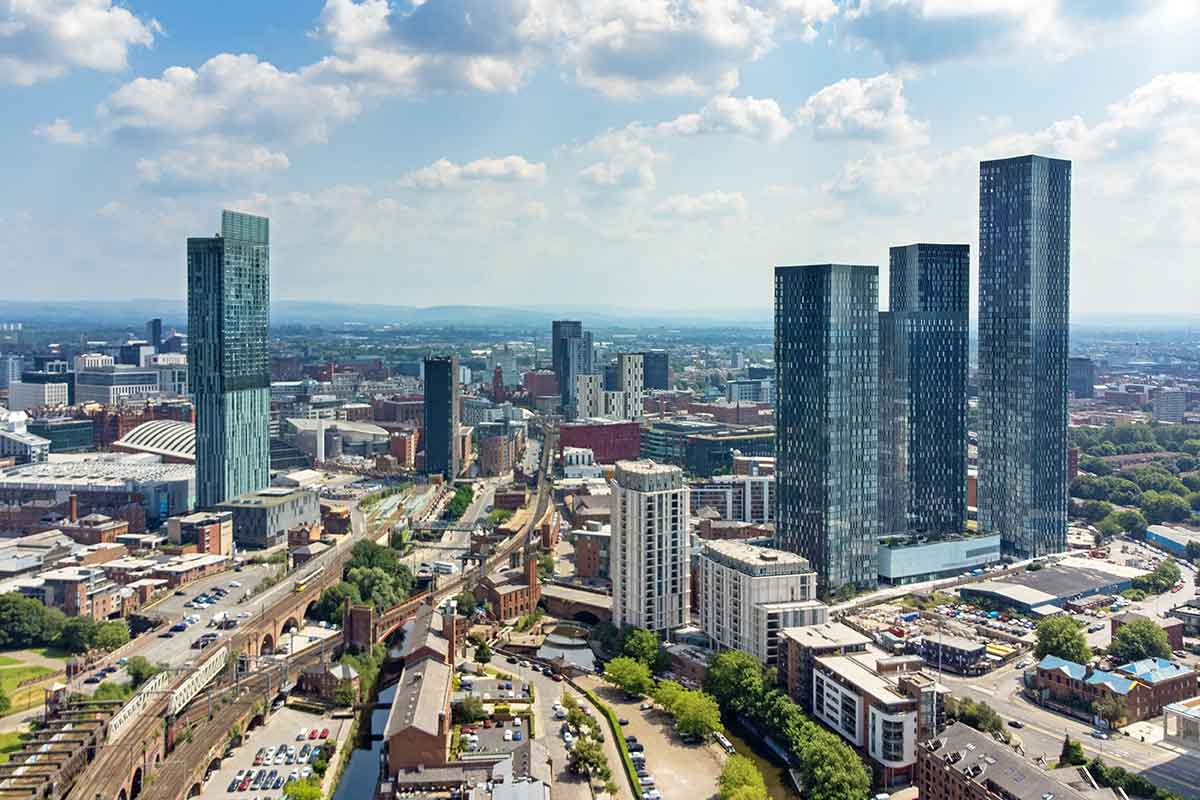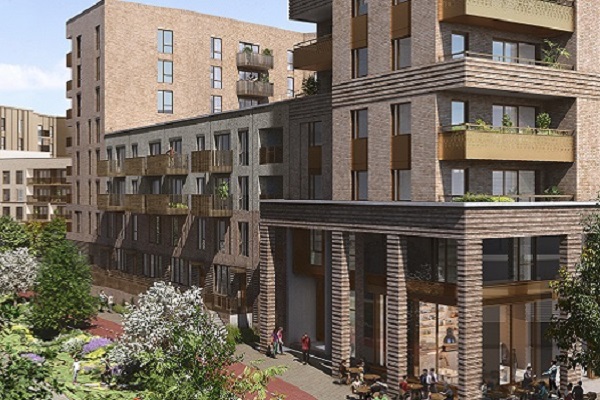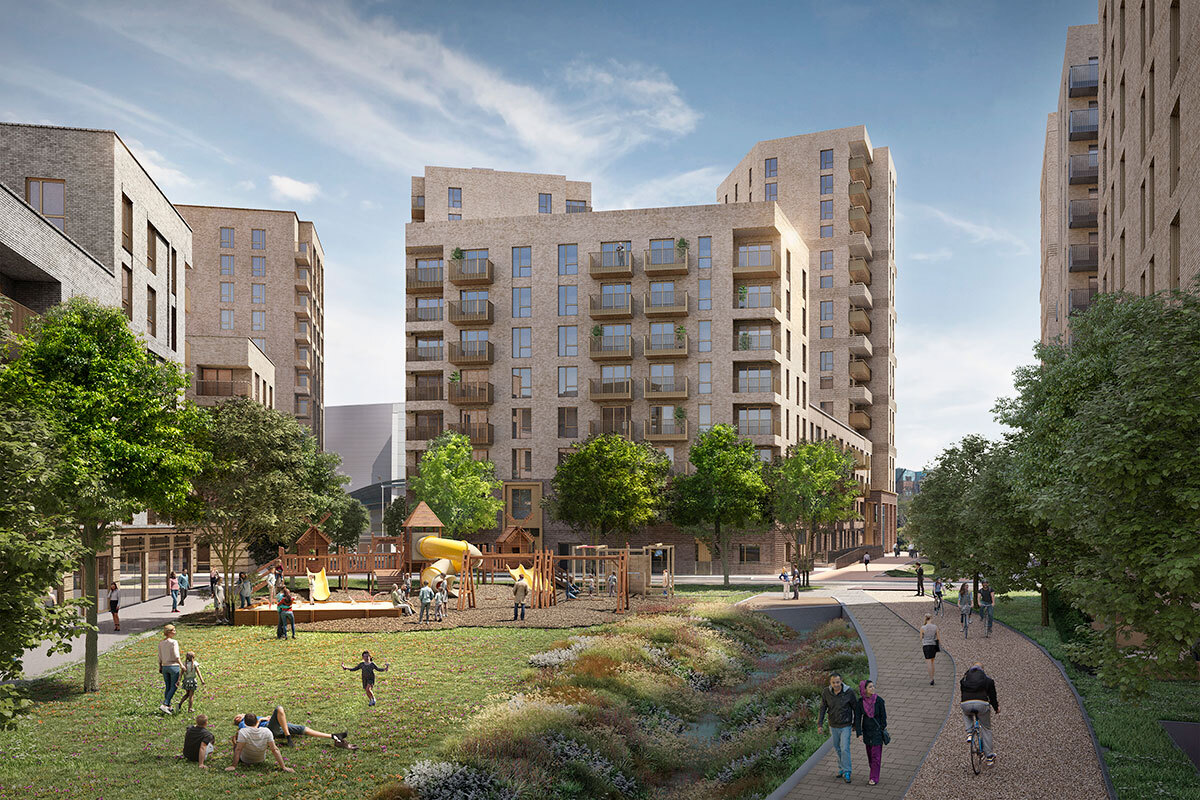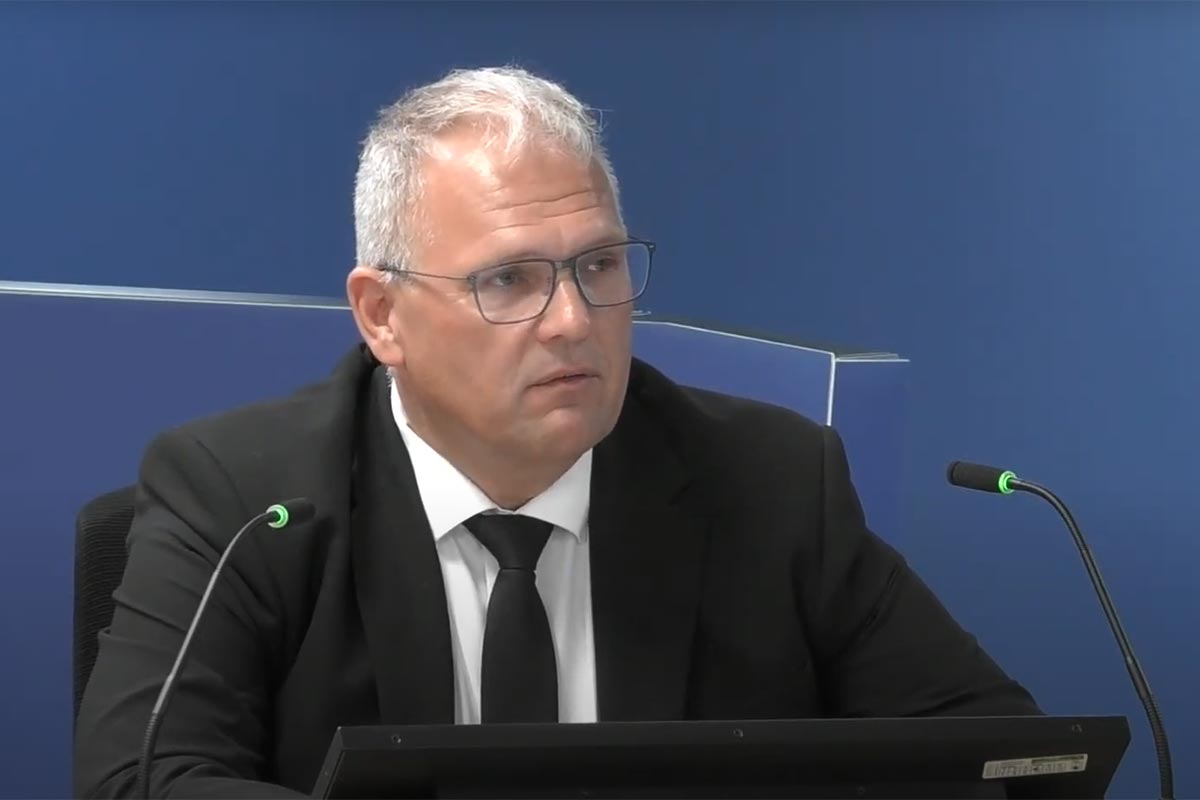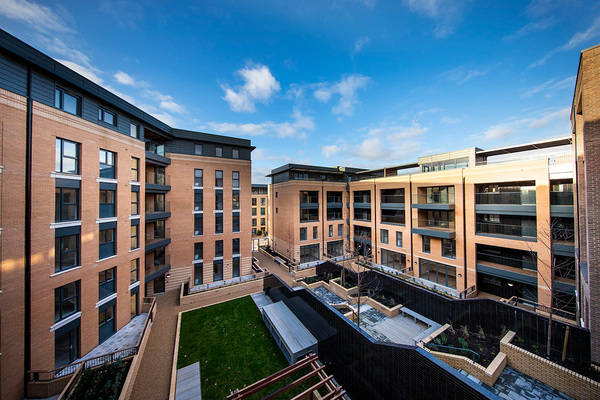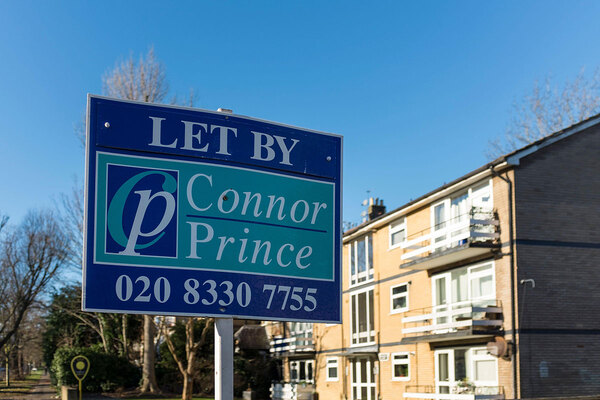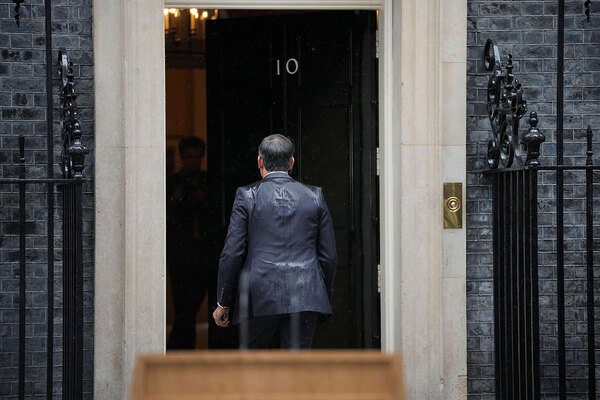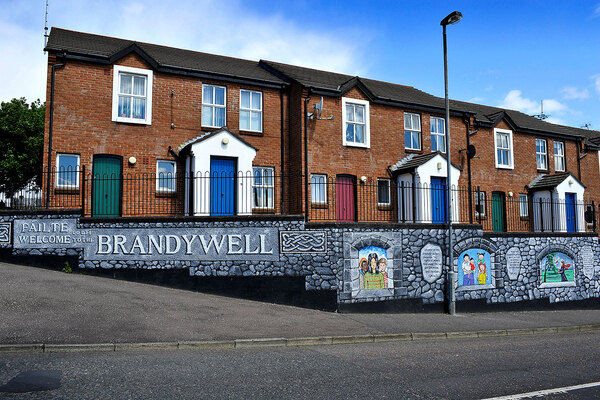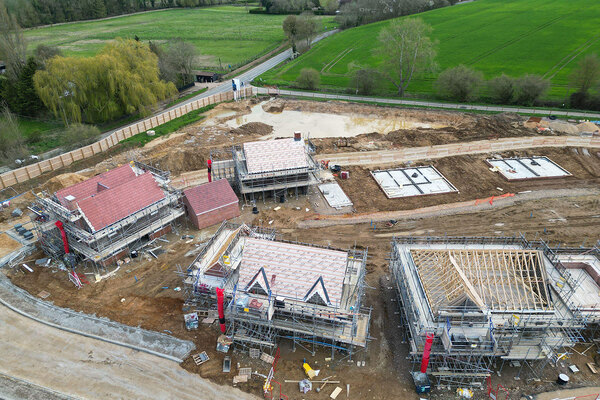Fire safety experts call for rethink over second staircases in letter to Gove
A group of 29 fire safety professionals have called on the government to scrap a requirement for new buildings taller than 18 metres to have a second staircase, contradicting calls from fire chiefs, architects and other industry bodies in favour of the proposed requirement.
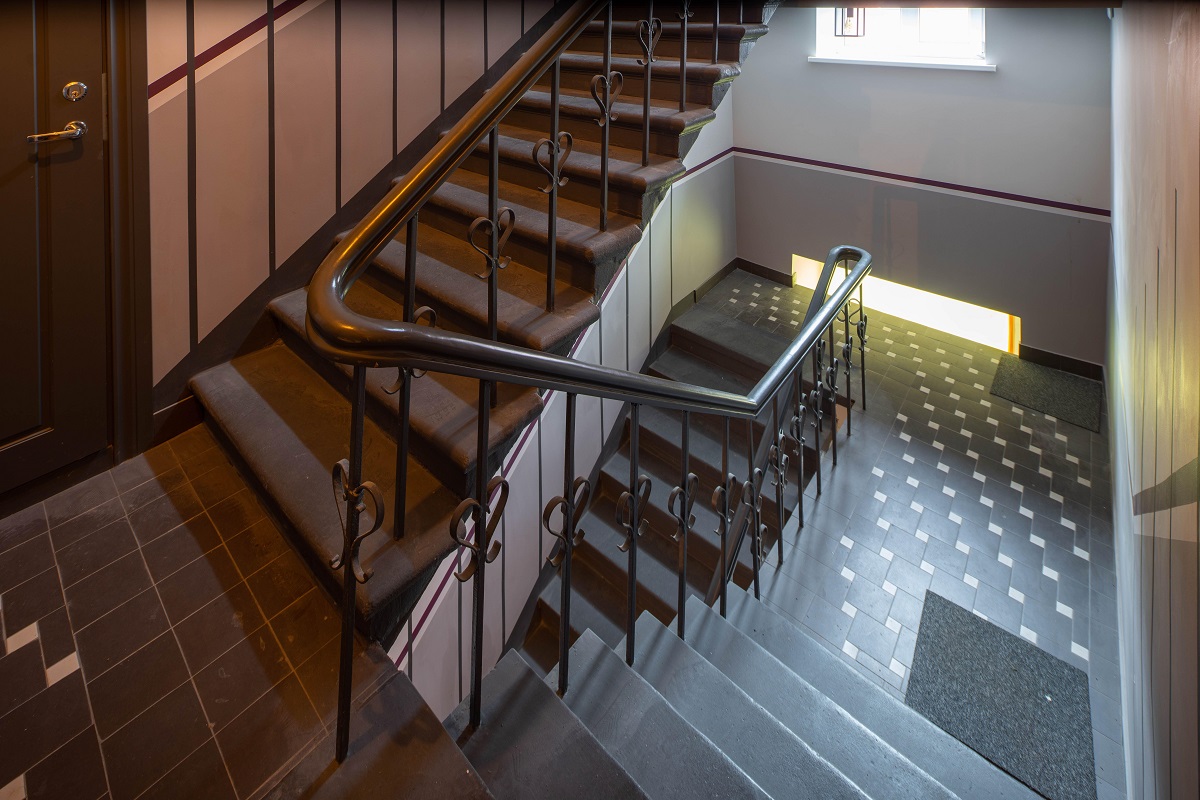
In a letter to housing secretary Michael Gove, the group of academics, engineers and consultants argued that “there is no evidence” the policy follows “data, science and expert advice” and that it could lead to “false confidence in safety.”
It added: “The pursuit of a second stair requirement as a policy should be terminated.”
The letter puts the professionals in direct opposition to a coalition led by the Royal Institute of British Architects (RIBA), which also includes the Chartered Institute of Building, the National Fire Chiefs Council (NFCC) and disability rights groups, that had called on Mr Gove to impose the policy “to make the built environment as safe as it can be”.
In response to the letter, the NFCC pointed to the fact that no organisations or “professional bodies” had endorsed the new letter.
It added that “modern methods of construction and emerging energy technologies race forward at a pace that building regulations guidance simply cannot keep pace with” and “other countries and governments all over the world have considered the available evidence and arrived at the conclusion that two staircases should be a minimum requirement to ensure no single point of failure”.
Last month, Mr Gove confirmed that the threshold for the policy would be lowered from the initially proposed 30 metres to 18 metres, “following confirmation from expert bodies that they support this threshold”.
But the new letter to Mr Gove said: “Mandating requirements can have unintended consequences and lead to false confidence in safety. We are concerned that the current proposals for second stair requirements do not represent an outcome-based approach to fire safety.”
The group said the debate over the policy has become an “unnecessary distraction” and caused “turmoil and concerns” for those “seeking to build homes”.
Among the letter’s signatories are Simon Lay, director of fire engineering consultancy OFR, who gave evidence in person at the Grenfell Tower Inquiry in June 2022, after being commissioned to produce a report by PSB UK, the company that designed and tested the tower’s smoke control system.
Mr Lay is also a part of the Health and Safety Executive’s building advisory committee on the Building Safety Act.
Fellow signatories include Professor Jose Torero, head of the department of civil, environmental and geomatic engineering at University College London and an expert witness to the Grenfell Tower Inquiry, and Adam Eaton, director of fire safety at engineering consultancy Hydrock.
Mr Lay told Inside Housing that the group is “agnostic on exactly how many stairs a building should have”, but that putting the requirement in legislation “feels a bit cart before the horse”.
He said that it is important to protect the horizontal route to the staircase, something which is not always emphasised in two-staircase buildings.
The letter pointed out that the NFCC had said in response to a 2018 consultation about the regulatory system in Scotland that the second staircase requirement was unnecessary and that “current provisions including the installation of sprinklers… are suitable”.
It cited fires in the UK, US and Canada in buildings with more than one staircase where there was loss of life away from the flat where the fire originated.
The signatories also argued it was “paramount that we establish and restore confidence in existing buildings”.
The letter added: “It is unclear how we can make occupants of existing buildings feel safe if it is a policy to insist that future buildings require an additional stair.”
“Devaluing existing buildings because of improving standards in future buildings has a very real and potentially catastrophic effect on residents, funders, developers and insurers,” it said.
Regulations are not generally applied retrospectively, which means any introduction of tougher requirements will only apply to new buildings. This has been the case for measures such as sprinklers, which are now required in blocks from 11 metres up in the years since Grenfell, without the “catastrophic” impacts described in the letter.
The professionals argued that other safety measures, such as compartmentalisation, smoke control and firefighter facilities, “deliver adequate safety in single-stair buildings”.
However, they also said that guidance should introduce an expectation that the capacity of the staircase in any building taller than 18 metres is sufficient to facilitate the evacuation of all residents simultaneously.
A fire safety expert who did not sign the letter, and asked not to be named, told Inside Housing they agreed with it to the extent that fire engineers were best placed to decide when additional stairs are needed and that additional fire safety provisions such as smoke extraction, fire-fighting lifts or sprinklers also make a building safer.
However, they added: “I do not agree with the letter when it says that a second stair does not increase the safety of residents. I think it does, and there are plenty of international cases showing that.
“I also don’t agree that the mandatory imposition of second staircases is bad news for England. The ease of approving high-rise buildings with a single stair might be one of the weakest aspects of an otherwise strong fire safety culture in this country.
“I note that the joint letter doesn’t address the benefits of a second stair in regards to redundancy and firefighting or the impact in reducing injuries from fire. The benefits of a second stair are even more important for high-rise buildings where stay-put might not be part of the fire strategy at some point.”
Research comparing more than 30 international building codes, carried out by McGill University in Montreal, found that only the UK, South Korea and Switzerland had no requirement for a second staircase, with countries such as the US, Ireland and Canada imposing requirements at four storeys and below.
Asked about this study, Mr Lay explained the UK “puts other [fire safety] provisions in place” and pointed out that Canada allows tall buildings to be made out of timber.
A single staircase was one of the complicating factors at Grenfell Tower. After firefighters based their operations in the stairwell and wedged open doors to run hoses, the stairwell was filled with smoke from burning flats. This severely hindered rescue efforts and made it impossible for some of those trapped to escape.
Many of those who did make it out after the stairwell was compromised suffered smoke inhalation injuries and mental trauma.
Writing in favour of the policy, RIBA has said a second staircase would provide means to fight a fire and evacuate a building if necessary.
“It is unacceptable that in England occupants are still at risk of a single point of failure and lack a safe, second smoke-free evacuation route in tall residential buildings,” it said.
There is also support for second staircases in other countries. Fire safety guidance from fire chiefs in Victoria, Australia, for example, said it does not support single-staircase buildings due to “limitations, difficulties and increased risks”, which include “reduced redundancy for the provision of a smoke and heat-free environment for occupant evacuation and fire brigade intervention” and “greater stairwell congestion caused by increased density of evacuating occupants and attending brigade members”.
The letter follows further correspondence sent to Mr Gove earlier this month by The Housing Forum, a representative group with member organisations ranging from architects and manufacturers to developers, housing associations and local authorities.
While that letter did not call for the requirement to be scrapped, it did ask for further clarity over the core purpose of the requirement and the technical requirements needed by designers to implement it.
For example, the letter asked for detail on whether one staircase is intended for residents and the other for firefighting, as this will impact design and fire strategy.
It also asked for technical information such as whether both stairs need a separate ‘core’ or whether two ‘scissor’ staircases inside a single core would be acceptable, and whether travel distances to both staircases needed to be the same.
The inclusion of a second core would reduce the profitability of a housing development, by removing from the ‘net lettable area’ – the amount of a building which can be sold.
A Department for Levelling Up, Housing and Communities spokesperson said: “We continue to strengthen and evolve our safety standards for new and existing buildings to ensure that people have confidence that their homes are safe to live in. That is why we have confirmed the intention to require second staircases in new residential buildings above 18 metres.
“This follows confirmation from expert bodies that they support this threshold, international precedent and strong support in the responses to our recent consultation on this subject.
“We welcome suggestions on how safety can be further improved and will share them with the new Building Safety Regulator.”
A spokesperson for the NFCC said: “The NFCC has welcomed the government’s announcement that all new high-rise residential buildings taller than 18 metres or seven stories must include more than one staircase.
“NFCC does not share the view of the authors of the letter that this requirement should be scrapped.”
It added: “We are disappointed with the way in which our position has been presented, which draws on evidence from a different regulatory setting in 2018 (in a different country with a different building control system) and also does not reflect our learning in the five years since.”
For example, it said, through the Building Risk Review and high-rise taskforce activity conducted by fire and rescue services many more buildings have since been found with significant fire safety issues.
As of 31 March 2023, there were more than 1,700 buildings reported with a temporary simultaneous evacuation strategy in place.
The NFCC spokesperson added: “We know more now than we did then. Of even more concern is that in the intervening period, very little has changed about how new buildings are regulated or signed off.
“On top of that, modern methods of construction and emerging energy technologies race forward at a pace that building regulations guidance simply cannot keep pace with.
“Other countries and governments all over the world have considered the available evidence and arrived at the conclusion that two staircases should be a minimum requirement to ensure no single point of failure.”
The spokesperson added: “We also note that no organisations or professional bodies appear to have endorsed the position set out in the letter.”
Update: at 5.45pm on 31.8.2023
This story was updated to clarify that Switzerland, as well as South Korea and the UK, do not require second staircases at any height.
Sign up for our fire safety newsletter
Already have an account? Click here to manage your newsletters
